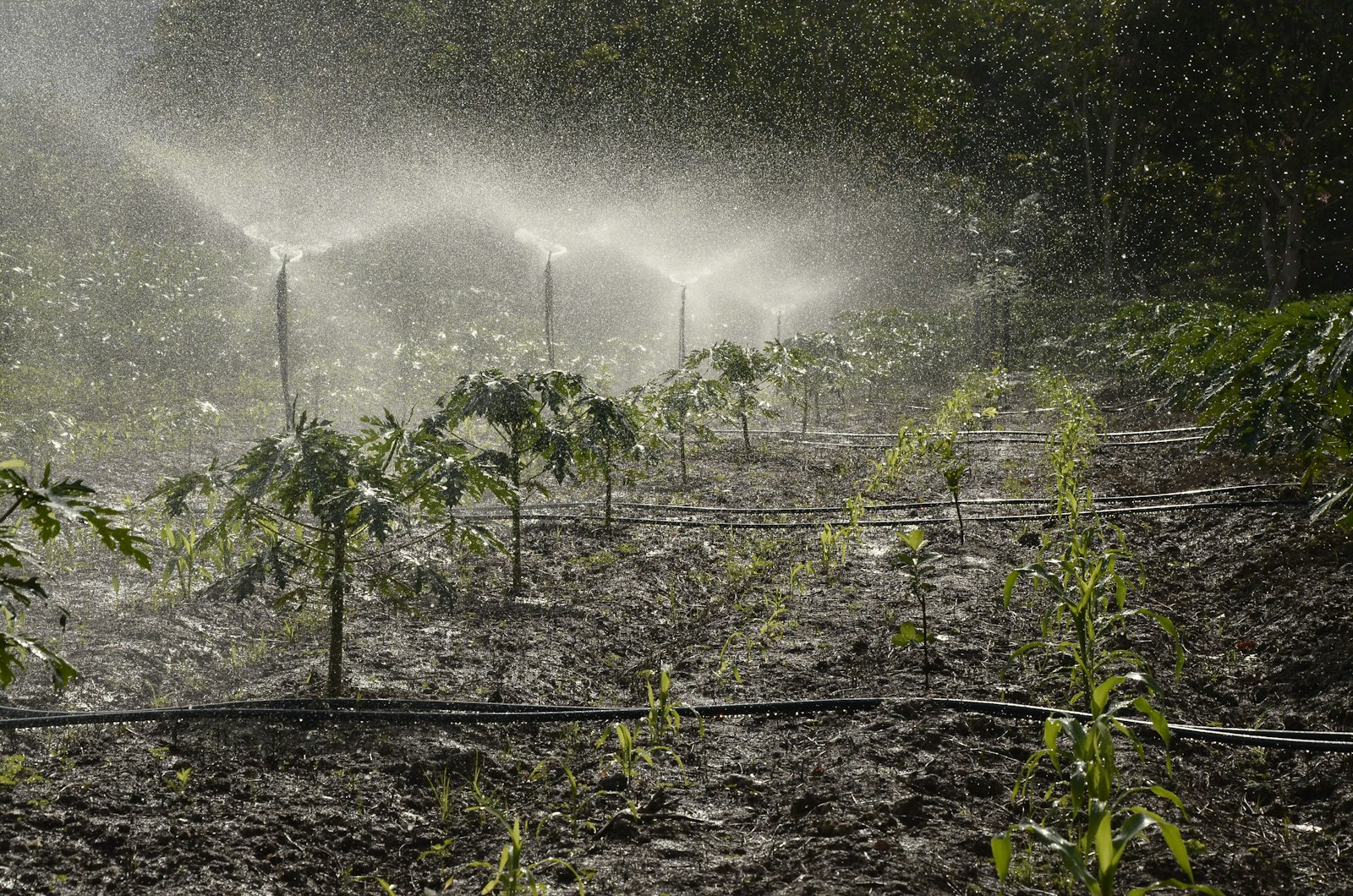
cultivos de secano

dry crops
The Spanish term 'cultivos de secano' translates to 'dry crops' in English. This term is typically used in agriculture and farming terminology to refer to crops that rely only on natural rainfall for their watering needs, rather than irrigation or other artificial watering systems. They are grown in dry, arid regions where water supply is minimal or unreliable. Examples of such crops are wheat, corn, and sorghum. This method of farming is common in regions with limited water resources.
Example sentences using: cultivos de secano
Los cultivos de secano pueden sufrir sequías extremas.

Dryland crops may suffer from extreme droughts.
This sentence is talking about the vulnerability of dryland crops, also known as 'cultivos de secano', to severe droughts.
El trigo es uno de los cultivos de secano más comunes en mi región.

Wheat is one of the most common dryland crops in my region.
In this sentence, the speaker is identifying wheat as one of the most frequent dryland crops, or 'cultivos de secano', found in their area.
En nuestro país, los cultivos de secano generalmente producen menos que los de regadío.

In our country, dryland crops usually yield less than irrigated crops.
This sentence is making a comparison between the yields of dryland crops, 'cultivos de secano', and irrigated crops in the speaker's country.
Los cultivos de secano son resistentes, pero necesitan una buena gestión.

Dryland crops are resilient but require good management.
This sentence suggests that while dryland crops, 'cultivos de secano', are tough, they need effective management to thrive.
Los cultivos de secano, como la cebada, son esenciales para la industria cervecera.

Dryland crops, such as barley, are essential for the beer industry.
In this sentence, barley, a type of 'cultivos de secano' or dryland crop, is identified as being crucial to the brewing industry.
En algunas regiones, los cultivos de secano son la única opción para los agricultores.

In some regions, dryland crops are the only option for farmers.
This sentence is saying that in certain areas, farmers only have the option of growing dryland crops, or 'cultivos de secano'.
Los cultivos de secano ayudan a mantener la biodiversidad en las regiones áridas.

Dryland crops help maintain biodiversity in arid regions.
Here, the sentence is discussing the role of 'cultivos de secano' or dryland crops, in protecting biodiversity in dry areas.
Los cultivos de secano pueden beneficiarse de las técnicas de conservación de agua.

Dryland crops can benefit from water conservation techniques.
In this sentence, it is mentioned that dryland crops, or 'cultivos de secano', can take advantage of water conservation methods.
Con el cambio climático, la importancia de los cultivos de secano está aumentando.

With climate change, the importance of dryland crops is increasing.
This sentence suggests that the impact of climate change is raising the significance of dryland crops, referred to as 'cultivos de secano'.
Los cultivos de secano, tales como el maíz, pueden ser cruciales para la alimentación mundial.

Dryland crops, such as maize, can be crucial for global food supply.
This sentence indicates that certain types of 'cultivos de secano' or dryland crops, like maize, can be vital to the world's food resources.